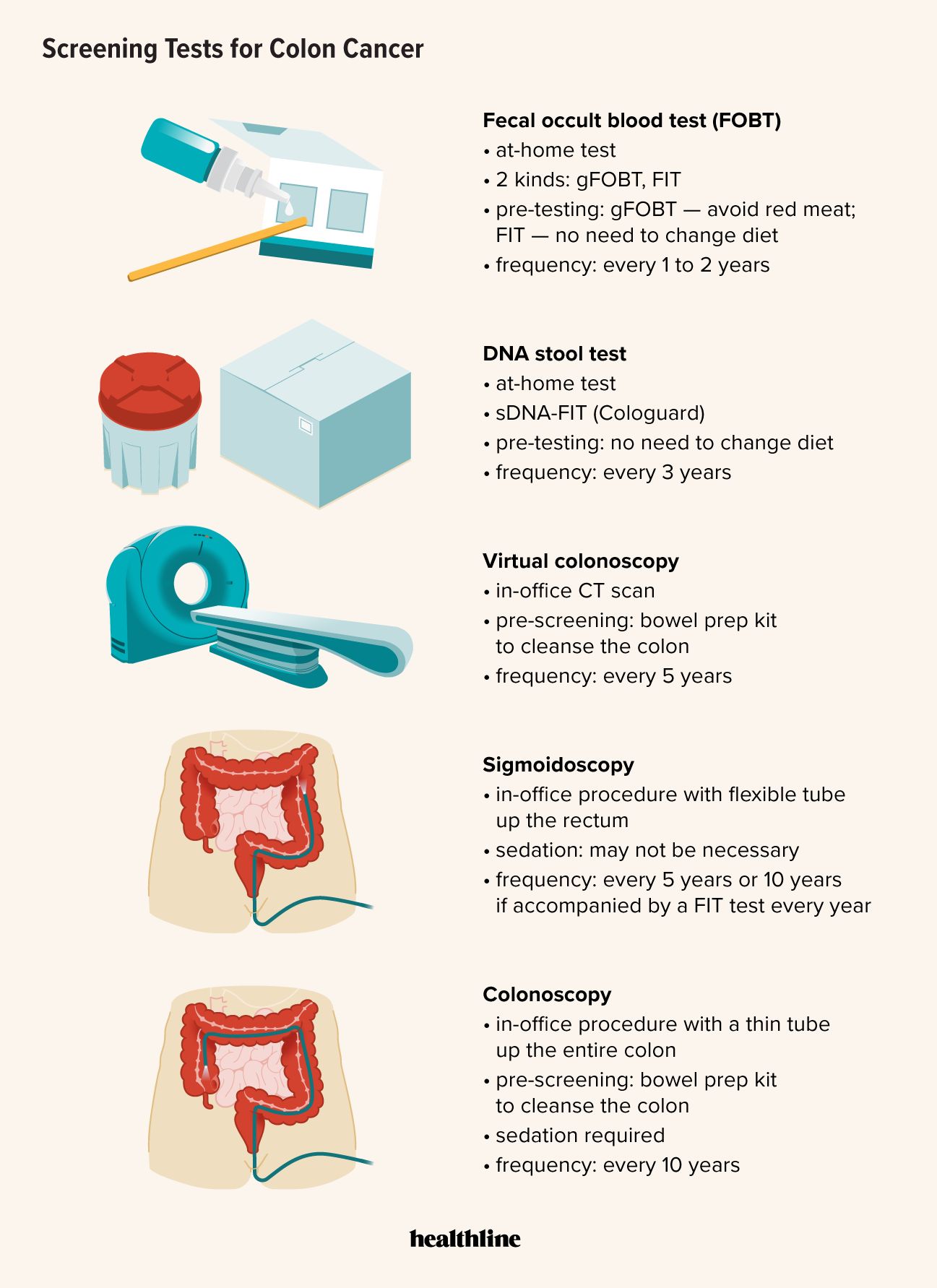Several at-home options for colon cancer screening are available. If any of these tests are positive, a doctor will recommend a colonoscopy for further analysis.
The U.S. Preventive Services Task Force recommends colorectal cancer screening for adults ages 45 to 75. Screening can help
You can undergo certain screening tests for colon cancer at home. Others are performed by a doctor, and you must visit a hospital or clinic. Here’s a breakdown of the different options for colorectal cancer screening.
The fecal occult blood test (FOBT) is a test that you can do at home using a kit from your doctor. The test looks for blood in the stool that you can’t easily see. You place a small stool sample on a card or into a container using a stick or brush and return it to the doctor for testing.
If the test is positive, a doctor will recommend a colonoscopy. A positive test means there is microscopic blood in the stool, which can relate to several conditions, including cancer.
There are
Doctors advise undergoing these tests every
The multitarget stool DNA testing (sDNA-FIT) (Cologuard) is a
sDNA-FIT tests a full bowel movement. The kit comes with the supplies you need to collect the sample and ship it back to the lab. You don’t have to change what you eat or make any special changes before doing the test.
If the test is positive for blood or genetic changes, a doctor will recommend a colonoscopy. The DNA stool test is
A virtual colonoscopy uses CT images to
If a virtual colonoscopy shows polyps, you may need a regular colonoscopy to remove them. This test can also miss smaller polyps.
Doctors recommend a virtual colonoscopy every 5 years.
A doctor places a thin, flexible tube up the rectum to perform a sigmoidoscopy. They
Before the procedure, the lower part of the colon is emptied of stool. The bowel-cleansing prep is not as extensive as that for a colonoscopy, and you probably won’t need sedation.
A sigmoidoscopy is
A colonoscopy involves guiding a thin tube up the entire colon. During the procedure, a doctor can examine the entire bowel and remove any polyps or growths.
Before you have a colonoscopy, you will
Doctors





